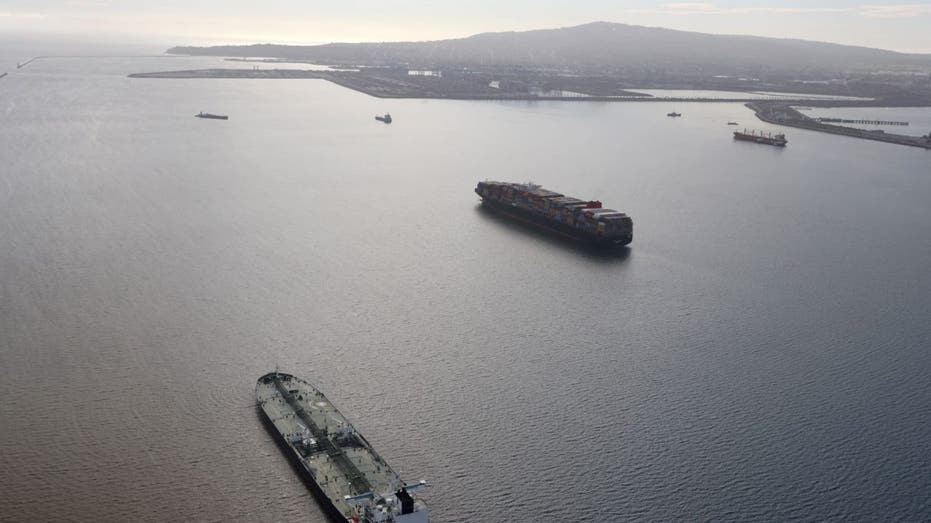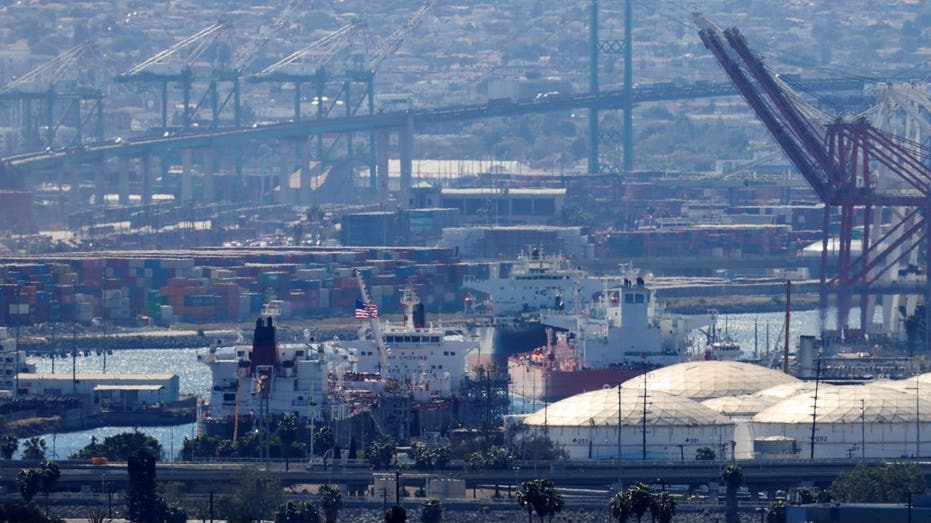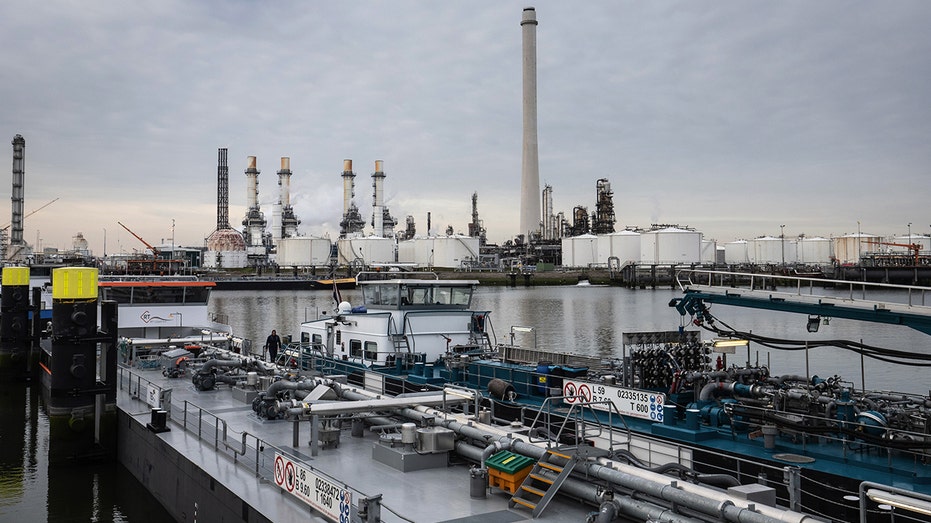Booming oil exports boost US role as global price maker
Trades of key Texas-crude contracts hit record high
Donalds: American economy can't run without oil
Florida Republican Rep. Byron Donalds and Committee to Unleash Prosperity's Steve Moore break down President Biden's economic policies on "Kudlow."
The world’s oil traders are increasingly adopting an old slogan as they track crude prices and try to shield themselves from volatility: Don’t mess with Texas.
Traders swapped contracts for oil sold in Houston and Midland, key hubs of the Texas export boom, at a record clip on Feb. 8, according to exchange giant CME Group. By Monday, the number of outstanding agreements for such crude deliveries sat at a record high.
The surge in activity reflects how U.S. crude exports increasingly shape global oil prices as well as the financial instruments bought and sold by producers, refiners and traders to avoid or capitalize on price swings. In June, a Texas-produced crude will be formally added to the Brent complex, the global benchmark.
BIDEN TO SELL 26 MILLION BARRELS MORE FROM THE STRATEGIC PETROLEUM RESERVE

An oil tanker waits in line outside the Port of Long Beach-Port of Los Angeles complex on April 7, 2021. (Reuters / Lucy Nicholson / Reuters Photos)
A spurt in U.S. crude production over the past decade accelerated the shift, pushing exports to new heights. Following the Russia's invasion of Ukraine last year, Western sanctions on Russian energy cemented the trend by making Europe more reliant on U.S. shipments.
Taken together, analysts say, the changes in physical and financial markets mean that the cost of driving cars, shipping freight or flying jets increasingly relies on what happens along the U.S. Gulf Coast.
West Texas Intermediate crude, or WTI, "has become the most important marginal pricing barrel on the globe," said Peter Keavey, CME Group’s global head of energy and environmental products.
"We have gone from a very domestically focused market into an international powerhouse," he added.
EUROPE BANS RUSSIAN DIESEL IMPORTS AND OTHER REFINED OIL PRODUCTS

Crude tankers are shown at the Port of Long Beach in California on March 8, 2022. (Reuters / Mike Blake / Reuters Photos)
In 2015, Washington reversed decades-old limits on crude exports after innovations in drilling technology tapped gushers of fossil fuels from U.S. shale regions. Producers in the epicenter of the boom, the Permian Basin, have since shuttled more output to international markets through a network of pipelines connected to ports in Houston and Corpus Christi, Texas.
Crude exports hit a record of 5.1 million barrels a day the week that ended Oct. 21, according to the U.S. Energy Information Administration, a roughly 10-fold increase since former President Barack Obama signed a bill opening the door to such shipments.
As traders loaded more tankers with U.S. crude deliveries to foreign buyers, related derivatives have grown more central to limiting risks, including war, pandemic and recession that have upended energy markets in recent years. Futures contracts, agreements for deliveries months or years in the future, are paramount to such hedging strategies.
In 2023 across CME Group markets, investors’ daily trading of WTI contracts tied to Houston and Midland has roughly doubled from the same period a year earlier. That uptick culminated Feb. 8 when the pair of agreements changed hands 57,302 times.
As of Monday, CME said, a record 361,285 of those contracts remained unsettled, representing attempts by producers, refiners and traders to limit risk in the future.
ALASKA REPUBLICANS DEMAND BIDEN 'BETTER NOT KILL' LATEST WILLOW PROJECT OIL DRILLING PROPOSAL

Chemical tanker barges are moored near silos and refining towers at the Royal Dutch Shell Plc Pernis refinery in Rotterdam, Netherlands, April 27, 2021. (Peter Boer / Bloomberg via Getty Images / Getty Images)
Analysts say the derivatives allow producers and traders to more precisely hedge before exports hit the water in the Gulf of Mexico. Those agreements are priced as differentials to WTI futures of blended crude delivered to a pipeline junction in Cushing, Oklahoma, a more widely traded contract seen as the domestic benchmark price.
The growth in crude tanker trips to Europe also threatened to make a closely watched global benchmark less representative of real-world trading. For years, five types of crude produced between the U.K. and Norway have traded into the Brent complex, which Wall Street views as a bellwether for international prices. But the region’s production tapered in recent years.
The price-reporting agency Platts responded by considering new streams of crude to add to the basket to better represent physical trading and limit volatility. U.S. crude from Midland won out over oil from the Johan Sverdrup field off the Norwegian coast, largely because its light, sweet makeup more closely matched other crudes in the North Sea.
"The European refinery market loves that stuff," said Dave Ernsberger, head of market reporting and trading solutions at S&P Global Commodity Insights, which owns Platts. "The Chinese refinery market loves that stuff."
The cost of such U.S. crude delivered to Europe will begin to be reflected in Platts’ price assessments for Brent in June.
CLICK HERE TO GET THE FOX BUSINESS APP
Already, traders are swapping a new futures contract Intercontinental Exchange (ICE) pegged to the price of Midland-quality crude when it reaches the Gulf Coast. There are more than 16,000 of such outstanding agreements, according to ICE, equivalent to about 16 million barrels of oil.
"This is the rebirth of U.S. oil as the driving force of global oil price," Ernsberger said.




















